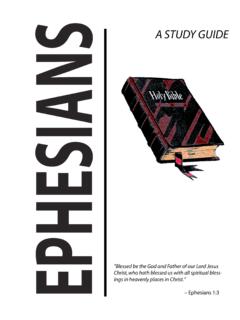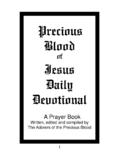Transcription of Problem: ActIvIty
1 1818 Problem: Local police were called to the scene of a car accident late last night when a newly-purchased car collided with a street light at the intersection of North and Main. By the time the police arrived the driver had fled the scene . The police couldn t find any witnesses. The crime scene Investigation team was called out to collect evidence. They collected the following:Glass fragments from the front seat of the carGlass fragments from around the outside of the on the broken windshield of the carFingerprints on the outer door handleFingerprints on the steering wheelFootprints in the mud under the street light.
2 Police traced the car back to a local dealership, where the salesman identified the owner of the vehicle a Mr. James Hatfield, who lives with his wife, Joanne Hatfield, 2 miles from the scene of the accident. When the police questioned Mr. Hatfield, he said his car had been stolen earlier that evening, but he had not yet filed a formal report. Mr. Hatfield claimed he saw his neighbor, Mr. Winston McCoy, use a coat-hanger to break into his car earlier that evening. It appears Hatfield and McCoy have been feuding with each other for many months, and the police have been called out on several occasions. The police questioned Mr.
3 McCoy regarding the matter. Despite his several complaints against Mr. Hatfield and his obvious jealousy over the new car, Mr. McCoy maintains he did not steal the car he just scratched the exterior paint with a key. He claims he never entered the vehicle. Police officers were able to obtain DNa samples from both Mr. Hatfield and Mr. McCoy. Mrs. Hatfield refused to give police a DNA sample, but she did allow herself to be fingerprinted along with both men. Your company, Diagnostic Forensic Solutions, has been asked to analyze the evidence for the local police department. You ve been asked to 1) prepare an invoice describing which forensic analyses you recommend performing on the given evidence and 2) write a summary report describing the results of the experiments and your interpretation.
4 The police department has a budget of $2,000 for this :Students are provided with a blank invoice outlining the available forensic procedures and their costs. Due to the budget constraint, students will not be able to order every possible forensic analysis. Instead, they must choose which test they feel will be most relevant to the investigation. Once the invoice has been submitted, students are provided with the appropriate results. (NOTE: students are only given the results of the analyses they order). The results of all the analyses are given on the following pages. They should be photocopied onto separate sheets of paper.
5 We ve provided test results for two different cases. You may want to have students try case 1 first; then the more difficult case 2. Both involve the same basic facts of the crime . In the first (marked Case ) there is a clear culprit who committed the crime , and all the tests implicate this man. In the second scenario (marked Case ) the evidence isn t as revealing, and the students interpretations will likely depend on which tests they elect to perform. In the second scenario many different interpretations are possible depending on the students creativity. It is up to the teacher to decide the relative merit of each individual solution.
6 Alternatively, the solutions may be shared with the whole class and discussed as to which is more the students have obtained the results, they write-up a summary report describing:The tests they ordered The results of those tests Which suspects, if any, are implicated or exonerated by those resultsTheir interpretation of how the crime occurred 191919teAcHer NoteS:This exercise simulates the actual workings of a private forensics laboratory. It is designed to demonstrate the effects of real-world economic constraints on criminal investigations. Providing a set budget limits the number of forensic analyses that can be performed, so students must weigh the relative merits of each analysis and determine which ones will provide the most relevant information.
7 The two scenarios provided with this exercise both reflect real life possibilities. often the evidence conclusively incriminates one suspect, and the case is brought to a swift and successful close. Sometimes, however, the evidence is not strong enough to convict a suspect, a case must be solved through further analysis and police work. Not every case can be solved as quickly as it is on qUeStIoNS:How did the analysis you choose to perform effect your interpretation of the crime ?1. Would having more money have affected your final interpretation?2. Is it realistic to spend a large amount on every case the police investigate?
8 3. What should determine how much money gets spent on each investigation?4. mAterIAlS:Nonecl ASSroom mANAgemeNt:This ActIvIty can be completed individually, but having the students work in small groups will foster interactivity and debate. There are several possible correct ways to carry-out this assignment, and the student may enjoy debating the merits of their various solutions. It is suggested the assignment conclude with each student or group of students sharing their own interpretation of the crime . Additionally, several questions are included below which can be discussed among the class as a ANSWer KeyDiagnotic Forensic Solutions, Facilities and LaborII.
9 Individual Analyses**The fee for each test will include analysis of ALL the pieces of evidence of that : This is just one of many possible ways to complete this $ 300/day 1 $ 300 Protective Equipment$ 20/day 1 $ 20 Testimony$ 300/day 1 $ 300 Clerical Support$ 60/day 1 $ 60 Forensic Scientist Labor$ 50/day 4 $ 200 Travel Time$ 500/day $
10 ItemRateNumberTotala. DNA Analysis (4 hours/analysis)$ 300/analysis $ DNA samples from blood , saliva, etc, are compared against each other and CODIS Fingerprint Comparison (2 hours/analysis)$ 300/analysis 1 $ 300 Comparison of provided prints against one another and against entire IAFIS Glass Analysis (1 hour/analysis)$ 150/analysis 1 $ 150 Glass fragments are analyzed to determine origin, any chemical treatments, Toolmark Comparisons (2 hours/analysis)







